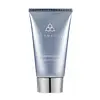What's inside
What's inside
 Key Ingredients
Key Ingredients

 Benefits
Benefits

 Concerns
Concerns

 Ingredients Side-by-side
Ingredients Side-by-side

Water
Skin ConditioningHydroxyethyl Acrylate/Sodium Acryloyldimethyl Taurate Copolymer
Emulsion StabilisingAloe Barbadensis Leaf Juice
Skin ConditioningGluconolactone
Skin ConditioningAminomethyl Propanol
BufferingDipotassium Glycyrrhizate
HumectantSodium Benzoate
Masking1,2-Hexanediol
Skin ConditioningCaprylyl Glycol
EmollientAcrylates/C10-30 Alkyl Acrylate Crosspolymer
Emulsion StabilisingSantalum Austrocaledonicum Wood Oil
MaskingAniba Rosodora Wood Oil
AstringentPhenoxyethanol
PreservativeSodium Hyaluronate
HumectantCitrus Grandis Peel Oil
MaskingCitrus Nobilis Peel Oil
MaskingTropolone
Skin ConditioningMentha Piperita Oil
MaskingPotassium Sorbate
PreservativeAcetyl Hexapeptide-8
HumectantPhytosterols
Skin ConditioningTocopherol
AntioxidantTocotrienols
Skin ConditioningOryza Sativa Bran Wax
Skin ConditioningSqualene
EmollientWater, Hydroxyethyl Acrylate/Sodium Acryloyldimethyl Taurate Copolymer, Aloe Barbadensis Leaf Juice, Gluconolactone, Aminomethyl Propanol, Dipotassium Glycyrrhizate, Sodium Benzoate, 1,2-Hexanediol, Caprylyl Glycol, Acrylates/C10-30 Alkyl Acrylate Crosspolymer, Santalum Austrocaledonicum Wood Oil, Aniba Rosodora Wood Oil, Phenoxyethanol, Sodium Hyaluronate, Citrus Grandis Peel Oil, Citrus Nobilis Peel Oil, Tropolone, Mentha Piperita Oil, Potassium Sorbate, Acetyl Hexapeptide-8, Phytosterols, Tocopherol, Tocotrienols, Oryza Sativa Bran Wax, Squalene
Water
Skin ConditioningGlycerin
HumectantIsodecyl Neopentanoate
EmollientGlyceryl Stearate
EmollientCoconut Alkanes
EmollientGluconolactone
Skin ConditioningSodium Levulinate
Skin ConditioningNiacinamide
SmoothingSyringa Vulgaris Extract
Skin ConditioningCarnitine
CleansingTrehalose
HumectantOpuntia Ficus-Indica Stem Extract
Skin ConditioningAloe Barbadensis Leaf Juice Powder
Skin ConditioningPolyglyceryl-4 Caprate
EmulsifyingCoco-Caprylate/Caprate
EmollientXanthan Gum
EmulsifyingCetyl Alcohol
EmollientStearyl Alcohol
EmollientCarbomer
Emulsion StabilisingMaltodextrin
AbsorbentSodium Benzoate
MaskingSodium Hydroxide
BufferingPotassium Sorbate
PreservativeSodium Anisate
AntimicrobialFarnesol
PerfumingCalcium Gluconate
HumectantPhenoxyethanol
PreservativeLavandula Angustifolia Extract
Skin ConditioningCaprylic/Capric Triglyceride
MaskingCamellia Sinensis Leaf Extract
AntimicrobialMentha Piperita Extract
CleansingRubus Occidentalis Fruit Extract
AstringentCitrus Aurantium Amara Flower Extract
RefreshingPyrus Malus Fruit Extract
Skin ConditioningRosmarinus Officinalis Leaf Extract
AntimicrobialSalvia Officinalis Leaf Extract
CleansingCitrus Aurantium Bergamia Fruit Extract
Skin ConditioningCupressus Sempervirens Leaf Extract
PerfumingWater, Glycerin, Isodecyl Neopentanoate, Glyceryl Stearate, Coconut Alkanes, Gluconolactone, Sodium Levulinate, Niacinamide, Syringa Vulgaris Extract, Carnitine, Trehalose, Opuntia Ficus-Indica Stem Extract, Aloe Barbadensis Leaf Juice Powder, Polyglyceryl-4 Caprate, Coco-Caprylate/Caprate, Xanthan Gum, Cetyl Alcohol, Stearyl Alcohol, Carbomer, Maltodextrin, Sodium Benzoate, Sodium Hydroxide, Potassium Sorbate, Sodium Anisate, Farnesol, Calcium Gluconate, Phenoxyethanol, Lavandula Angustifolia Extract, Caprylic/Capric Triglyceride, Camellia Sinensis Leaf Extract, Mentha Piperita Extract, Rubus Occidentalis Fruit Extract, Citrus Aurantium Amara Flower Extract, Pyrus Malus Fruit Extract, Rosmarinus Officinalis Leaf Extract, Salvia Officinalis Leaf Extract, Citrus Aurantium Bergamia Fruit Extract, Cupressus Sempervirens Leaf Extract
Ingredients Explained
These ingredients are found in both products.
Ingredients higher up in an ingredient list are typically present in a larger amount.
Gluconolactone is a PHA. PHAs are a great gentle alternative to traditional AHAs.
When applied, Gluconolactone has the same affect on skin as AHAs such as lactic acid. It helps dissolve the dead skin cells in the top layer of your skin. This improves texture and brightens the skin.
PHAs are more gentle than AHAs due to their larger structure. They do not penetrate as deeply as AHAs and take a longer time to dissolve dead cells. Studies show PHAs do not cause as much irritation.
Gluconolactone has some interesting properties:
In a 2004 study, Gluconolactone was found to prevent UV damage in mouse skin cells and has not been found to increase sun sensitivity. However, we still recommend wearing SPF daily.
This ingredient is is an created by reacting gluconic acid with an alcohol.
Learn more about GluconolactonePhenoxyethanol is a preservative that has germicide, antimicrobial, and aromatic properties. Studies show that phenoxyethanol can prevent microbial growth. By itself, it has a scent that is similar to that of a rose.
It's often used in formulations along with Caprylyl Glycol to preserve the shelf life of products.
Potassium Sorbate is a preservative used to prevent yeast and mold in products. It is commonly found in both cosmetic and food products.
This ingredient comes from potassium salt derived from sorbic acid. Sorbic acid is a natural antibiotic and effective against fungus.
Both potassium sorbate and sorbic acid can be found in baked goods, cheeses, dried meats, dried fruit, ice cream, pickles, wine, yogurt, and more.
You'll often find this ingredient used with other preservatives.
Learn more about Potassium SorbateSodium Benzoate is a preservative. It's used in both cosmetic and food products to inhibit the growth of mold and bacteria. It is typically produced synthetically.
Both the US FDA and EU Health Committee have approved the use of sodium benzoate. In the US, levels of 0.1% (of the total product) are allowed.
Sodium benzoate works as a preservative by inhibiting the growth of bacteria inside of cells. It prevents the cell from fermenting a type of sugar using an enzyme called phosphofructokinase.
It is the salt of benzoic acid. Foods containing sodium benzoate include soda, salad dressings, condiments, fruit juices, wines, and snack foods.
Studies for using ascorbic acid and sodium benzoate in cosmetics are lacking, especially in skincare routines with multiple steps.
We always recommend speaking with a professional, such as a dermatologist, if you have any concerns.
Learn more about Sodium BenzoateWater. It's the most common cosmetic ingredient of all. You'll usually see it at the top of ingredient lists, meaning that it makes up the largest part of the product.
So why is it so popular? Water most often acts as a solvent - this means that it helps dissolve other ingredients into the formulation.
You'll also recognize water as that liquid we all need to stay alive. If you see this, drink a glass of water. Stay hydrated!
Learn more about Water